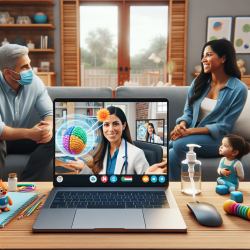Enhancing Swallowing Therapy: Insights from Food Texture and Liquid Consistency Research
Swallowing difficulties, or dysphagia, are a significant concern for many children, impacting their nutrition, health, and quality of life. As practitioners, we strive to use evidence-based strategies to enhance therapy outcomes. The recent research article titled "Erratum to: The Influence of Food Texture and Liquid Consistency Modification on Swallowing Physiology and Function: A Systematic Review" provides valuable insights that can help us refine our approaches.
Key Findings from the Research
The systematic review analyzed the effects of food texture and liquid consistency modifications on swallowing physiology and function. The study revealed several critical points:
- Food Texture: Modifying food texture can significantly impact the ease and safety of swallowing. Softer textures generally reduce the risk of aspiration and improve swallowing efficiency.
- Liquid Consistency: Adjusting the thickness of liquids can help manage swallowing difficulties. Thicker liquids tend to move more slowly, allowing better control and reducing the risk of aspiration.
- Individual Variability: The effectiveness of texture and consistency modifications can vary significantly between individuals. Tailored approaches are essential for optimal outcomes.
Practical Applications for Practitioners
Implementing the findings from this research can enhance your therapy sessions. Here are some practical steps:
- Assessment: Conduct thorough assessments to understand each child's specific swallowing difficulties. Use tools like the Modified Barium Swallow Study (MBSS) to get detailed insights.
- Customization: Customize food textures and liquid consistencies based on individual needs. Consider starting with softer textures and thicker liquids, and adjust based on the child's response.
- Collaboration: Work closely with dietitians, caregivers, and other healthcare professionals to ensure a cohesive approach to managing dysphagia.
- Education: Educate families about the importance of texture and consistency modifications. Provide them with resources and training to implement these changes at home.
- Monitoring: Regularly monitor the child's progress and adjust the therapy plan as needed. Use objective measures to track improvements in swallowing function.
Encouraging Further Research
While the findings from this systematic review are promising, further research is needed to explore the long-term effects of texture and consistency modifications. As practitioners, we can contribute to this body of knowledge by:
- Participating in Studies: Engage in clinical research studies to gather more data on the effectiveness of these modifications.
- Sharing Case Studies: Document and share case studies that highlight successful interventions. This can provide valuable insights for other practitioners.
- Collaborating with Researchers: Partner with academic institutions and researchers to conduct comprehensive studies on dysphagia management.
By staying informed and actively contributing to research, we can continue to improve our practices and provide the best possible care for children with swallowing difficulties.
To read the original research paper, please follow this link: Erratum to: The Influence of Food Texture and Liquid Consistency Modification on Swallowing Physiology and Function: A Systematic Review.










